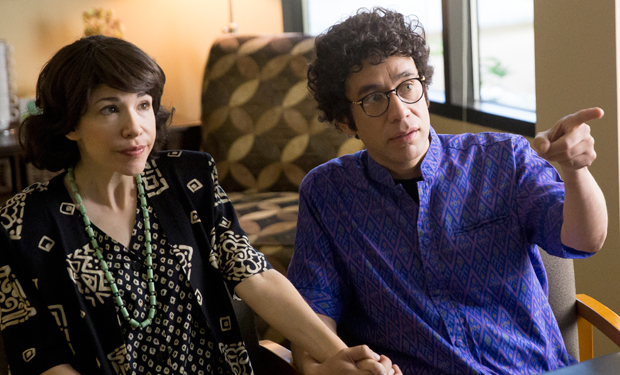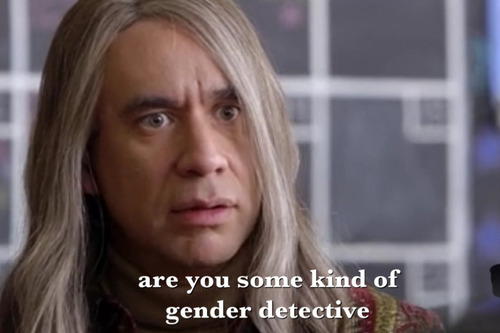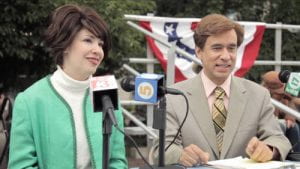Armstrong, Cory L., et al. “Female News Professionals in Local and National Broadcast News during the Buildup to the Iraq War.” Journal of Broadcasting & Electronic Media, vol. 50, no. 1, Mar. 2006, pp. 78-94. EBSCOhost, doi:10.1207/s15506878jobem5001_5.
This source, a peer-reviewed academic article, covers gender representation on TV news during the buildup to the Iraq War. Specifically, it talks about how women are (or are not) represented across different networks in terms of both simply being on the news and airtime. Additionally, it compares local and national news regarding the stories women typically tell compared to men.
The results of this study suggested that there is less of a gender disparity on the local front than the national front. Routinely, national news would run stories with female newscasters that ran shorter than those of their male counterparts and covered more “soft” topics like social stories or feel-good news instead of “hard” topics like war or the economy that men tended to cover. Local news was more equitable in their distribution of stories and story length, according to the study. However, it was still determined that younger female reporters did not get as much airtime or as long a story length as the more seasoned female reporters (or those who were perceived to be older). My research could use this study as it encompasses airtime and story nature of men compared to women.
Kern, Rebecca, and Suman Mishra. “(Re) Framing Women and Network News: A Comparative Analysis.” Women’s Studies, vol. 43, no. 6, Aug. 2014, pp. 712–732. EBSCOhost, doi:10.1080/00497878.2014.921513.
This source, an peer-reviewed article regarding the way women are depicted in network news, is a very interesting one that brings up important points about how gendered society’s views of female newscasters can be. The source specifically talks about how popular female TV personalities like Katie Couric and Diane Sawyer are covered and perceived by the public.
Specifically, the article covered the extent to which gender and female characteristics were mentioned in stories about the respective personalities. The findings of the research were relatively surprising. It was found that coverage of Katie Couric had much more to do with things like her gender, her appearance, and her age (all qualities that are not as often talked about regarding men). Conversely, it found that coverage of Diane Sawyer was actually much more focused on her professional role with ABC, suggesting her gender was not as prevalent in the way people perceived her. This leads to the conclusion that women can have differing experiences at different networks. This is useful to my research as it shows gendered dynamics on TV news.
Finneman, Teri, and Joy Jenkins. “Sexism on the Set: Gendered Expectations of TV Broadcasters in a Social Media World.” Journal of Broadcasting & Electronic Media, vol. 62, no. 3, Sept. 2018, pp. 479–494. EBSCOhost, doi:10.1080/08838151.2018.1484292.
This peer-reviewed academic journal article examines how our expectations of how certain genders should portray themselves in the TV news media shapes our perceptions of them. The study is specific to the era of social media, so we can assume some degree of social progress since the onset of TV news, but still recognize a lot of bias.
The article concluded that little progress has been made in the past few decades. The research found little evidence of a reduced amount of criticism of broadcasters’ appearances in the age of social media. Specifically, females faced more criticism for their appearance than males, suggesting that females face an added difficulty of constantly trying to look “good enough” for the audience to take them seriously. As such, we can conclude that social media has simply given people another method to perpetuate gender norms rather than question them. This is useful to my research as I am concerned with how female broadcasters face different challenges than their male coworkers.
Papper, Bob. “Little Change for Women, Minorities in TV/Radio.” RTDNA, 2013, www.rtdna.org/article/little_change_for_women_minorities_in_tv_radio.
This source references a 2013 study conducted jointly by Hofstra University and RTDNA regarding minority and gender representation in TV and radio programs. This highlights the intersectionality of feminism, as there are many dimensions across which discrimination can occur. As such, it is useful to my research because we are also concerned with other marginalized groups.
The findings were that nothing has changed too drastically within the timeframe of the past few years. The percentage of minorities represented in TV went virtually unchanged from 2012-2013, but the percentage of minority news directors at non-Hispanic TV stations was at its second highest level ever in 2013. Women overall in TV news rose slightly, reaching over 40% in 2013, and radio women directors rose slightly. They also found that men outnumber women for all ethnic groups except Asian-Americans. This study shows that we still have much to do to get to equitable representation in TV news (and radio, even though this isn’t part of my research).
Guskin, Emily. “5 Facts about Ethnic and Gender Diversity in U.S. Newsrooms.” Pew Research Center, Pew Research Center, 18 July 2013, www.pewresearch.org/fact-tank/2013/07/18/5-facts-about-ethnic-and-gender-diversity-in-u-s-newsrooms/.
This source is an online article from pew research, citing various statistics regarding minority and gender representation in news media. This further underscores the importance of intersectionality in truly understanding any social justice movement. While my research is primarily concerned with gender, I am also interested in how ethnicity and race play a role in the television news landscape.
The core argument of this piece is that we still have a long way to go before we reach equity in either gender or ethnicity in news. One of the interesting figures this piece brings up is that overall, minorities still only account for about 12% of the overall workforce in newsrooms across the United States. While women are more represented in these environments, still only about one third of newsroom managers are female, suggesting that there are some hurdles for females who wish to rise in the ranks of these organizations. These figures will certainly assist me in determining the scope of gender representation in news through my research.
LaFrance, Adrienne. “I Analyzed a Year of My Reporting for Gender Bias (Again).” The Atlantic, Atlantic Media Company, 18 Feb. 2016, www.theatlantic.com/technology/archive/2016/02/gender-diversity-journalism/463023/.
This article from The Atlantic is perhaps less scientific in approach than the others, but still provides an interesting perspective on the way news media represents gender. The reporter in this piece cites complaints about how even unintentionally, she still quotes and mentions much less women than men.
In 2012, the writer of this piece analyzed many of his articles and found that about a quarter of the people he quoted or mentioned were women, suggesting men were much more commonly the focus of his articles. In 2016, the writer conducted the same sort of self- analysis and found that only 22% of the names she included or mentioned in her articles were women. Even after she became aware of her lack of adequate gender representation, she unintentionally continued disproportionately covering men in relation to women. This can carry over to TV media as well, which would be a logical assumption since the nature of the stories that are covered in both mediums are relatively similar. As such, this is a valuable perspective for my research into gender representation not only on the news, but in the news.







